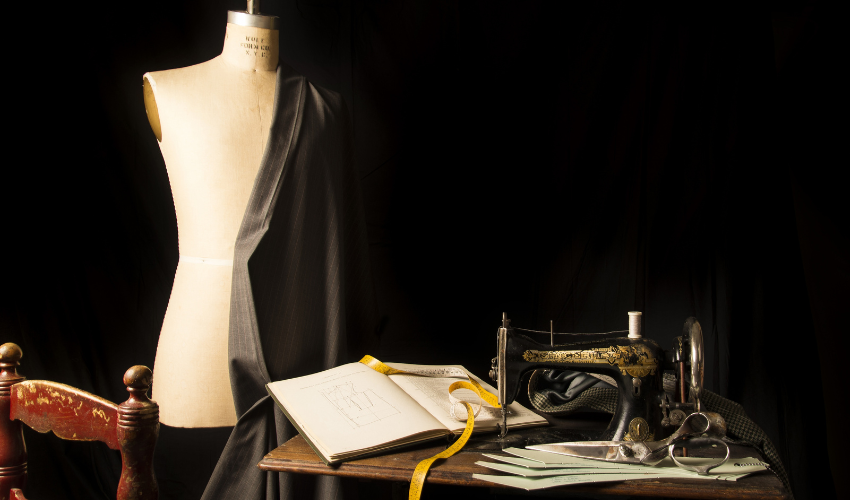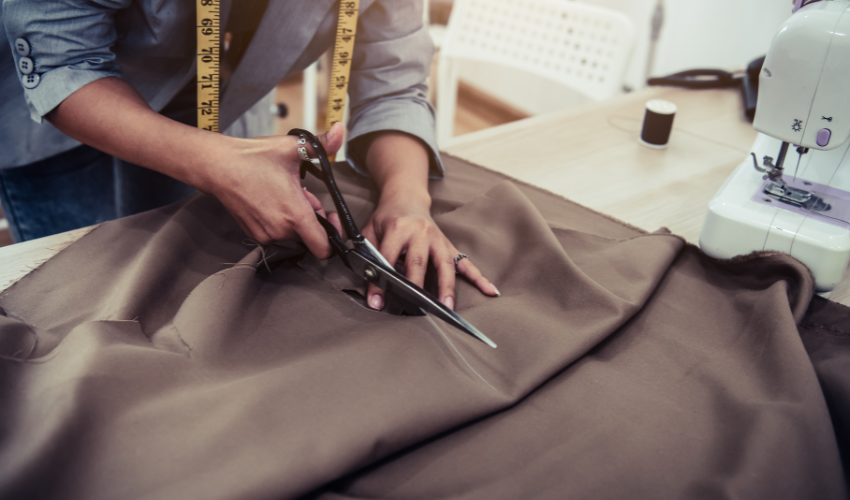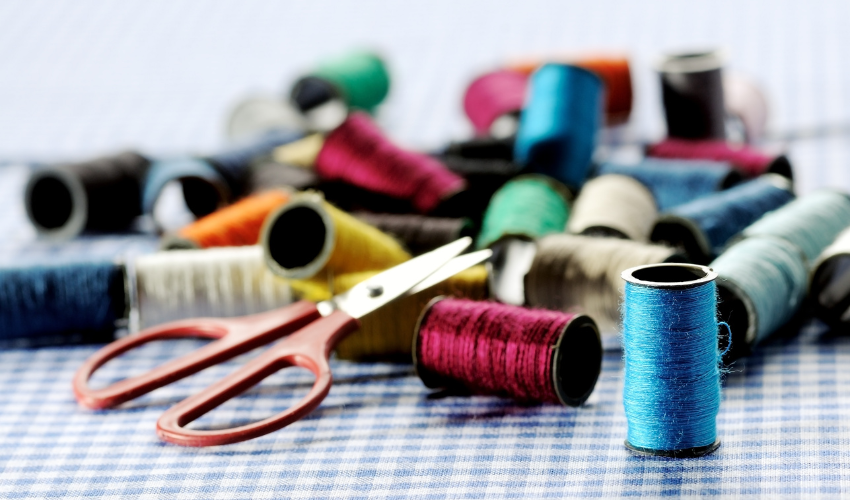Tailoring is a time-honored craft that has been practiced for centuries. From simple alterations to custom-made garments, tailoring is an essential skill that can transform an ordinary outfit into a work of art. Whether you are a beginner or an experienced tailor, this guide will help you master the art of tailoring.
In this guide to tailoring, we will cover the basics of tailoring, including the tools and materials required, how to take accurate measurements, and the different types of stitches used in tailoring. We’ll also discuss the different types of fabrics and how to choose the right fabric for your project. So let’s get started!

The Basics of Tailoring
Essential Tools and Materials
To get started with tailoring, you’ll need to invest in some essential tools. These include:
- Measuring tape: This will help you take accurate measurements of your body and your fabric.
- Scissors: A sharp pair of fabric scissors is crucial for cutting fabric with precision.
- Pins: You’ll need pins to hold your fabric in place while you’re sewing.
- Sewing machine: A good-quality sewing machine will make your tailoring projects much easier and faster.
- Iron: Ironing is a crucial step in tailoring, as it helps you create crisp edges and smooth seams.
Taking Accurate Measurements
Taking accurate measurements is crucial for creating garments that fit perfectly. To take measurements, you’ll need a measuring tape and a friend to help you. Here are the basic measurements you’ll need:
- Chest
- Waist
- Hips
- Inseam
- Shoulder width
- Arm length
- Neck circumference
Understanding Stitches
There are many different types of stitches used in tailoring, each with its own unique purpose. Some of the most common stitches include:
- Straight stitch
- Zigzag stitch
- Backstitch
- Slipstitch
- Blind hem stitch
Choosing Fabrics for Tailoring

Types of Fabrics
When it comes to choosing fabrics for tailoring, there are many different types to choose from. Some of the most popular fabrics include:
- Cotton
- Wool
- Silk
- Linen
- Polyester
- Rayon
Choosing the Right Fabric for Your Project
When it comes to tailoring, the fabric you choose is just as important as the tools you use. Here are some tips for selecting the right fabric for your project:
- Consider the weight and drape of the fabric. Heavier fabrics are better suited for structured garments, while lighter fabrics are better for flowing styles.
- Look for high-quality fabrics that will last for years and retain their shape and color.
- Choose a fabric that complements your skin tone, personal style, and the occasion you’ll be wearing the garment to.
Tailoring Techniques

Basic Alterations
Basic alterations are a great place to start for beginners. These include hemming pants, taking in or letting out a waistband, and shortening sleeves.
Advanced Techniques
Advanced tailoring techniques include creating custom-made garments and more complex alterations. These techniques require more skill and experience but can result in stunning garments that fit perfectly.
Frequently Asked Questions
What is the difference between tailoring and alterations?
Tailoring refers to the creation of custom-made garments, while alterations involve making adjustments to existing garments to improve the fit.
Do I need a sewing machine to tailor?
While a sewing machine is helpful, it is possible to tailor by hand using a needle and thread.
How do I know which stitch to use?
The type of stitch you use will depend on the fabric and the purpose of the stitch. Straight stitches are good for seams, while zigzag stitches are good for finishing edges.
Can I tailor my own clothes?
Yes, with practice and patience, anyone can learn to tailor their own clothes.
How long does it take to become a skilled tailor?
Becoming a skilled tailor takes time and practice. It can take months or even years to develop the necessary skills to create complex garments, but with dedication and hard work, anyone can become a skilled tailor.
Conclusion
Tailoring is a valuable skill that can help you create garments that fit perfectly and reflect your personal style. By following the basic techniques, choosing the right materials, and practicing regularly, you can become a skilled tailor in no time. Remember to take accurate measurements, use the right stitches, and choose fabrics that complement your project. With this guide to tailoring, you’ll be on your way to creating stunning garments in no time. Happy tailoring!























